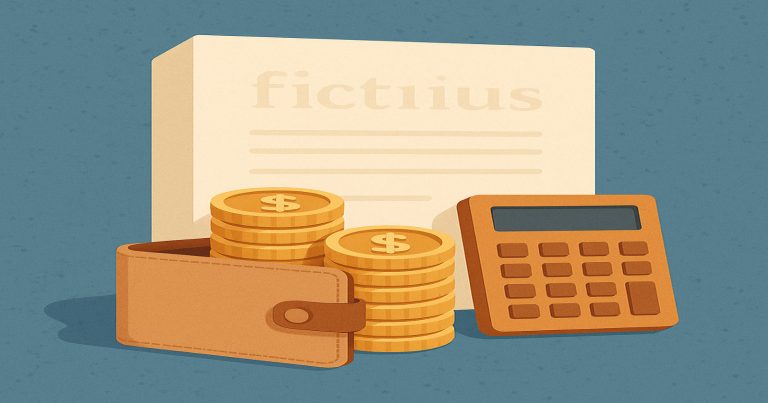Fictitious assets are big expense or losses a company can’t take in full in the year they take place. Instead, that cost shows up on the balance sheet and is amortized over the years. Fictitious assets do not have any physical presence or realizable value but help in better presenting the financial position of the company. In this article, we will understand fictitious assets meaning, see fictitious assets examples, and explore fictitious assets vs intangible assets clearly.
What are Fictitious Assets?
Fictitious assets are accruals and amortisation that the company cannot currently announce as expenses in the profit and loss account. Since these sums can be quite large, businesses bring them over and record them on the asset side of the balance sheet. There is no money in these costs; they do not produce anything tangible, they just assist in accounting properly.
Examples of Fictitious Assets
- Start up costs: Legal, registration and advertising as the company is getting started.
- Discount on Issue of Shares and Debentures: Loss on issue of shares at less than their nominal value.
- Underwriting commission: Amounts paid to underwriters for issue of companies’ shares or debentures.
- Deferred revenue costs: Advertising and R&D costs that are associated with future years.
This is why fictitious assets are not tangible assets but tools of accounting to shift the burden of the financial distress.
Characteristics of Fictitious Assets
To learn about the characteristics of fictitious assets is useful. It helps to gain a better understanding of the way companies manipulate their financial statements. Here are their primary features:
- Not real: Fictitious assets do not exist in reality and are not sellable.
- Amortization Over Time: Businesses spread the cost of such expenses over many years so they don’t suffer an unusually large loss in any single year.
- Shown on the Balance Sheet: Though these are expenses, companies reflect fictitious assets on the face of the balance sheet under the head “Assets.”
- No Tangible Economic Advantage: They don’t make money or improve business operations in any direct way.
| Characteristics | Explanation |
| Non Tangible | No physical form or realizable value |
| Gradual Amortization | Expense spread over multiple years |
| Shown on the Balance Sheet | Listed under assets |
| No Tangible Economic Advantage | Used only for better financial presentation |
Examples of Fictitious Asset
To know fictitious assets examples is important for students and new accountants. These cases illustrate how businesses successfully handle big costs. An example of a fictitious asset can be understood by looking at how companies handle certain large expenditures.
Preliminary Expenses
Tutoring and new company leases Legal accounting promotion fees When a new company is registered, fees are paid by it for legal accounting and promotion. These are not revenue-generating costs in the short term. Then, rather than take the charge in year one, the company books them as phony assets and amortizes them over several years.
Discount on Issue of Shares
Imagine a firm issuing shares at ₹90 when the face value is ₹100. This discount of ₹10 is considered to be an imaginary asset. It doesn’t land on the profit and loss account at one time. Instead, it gets expensed over future years.
Deferred Revenue Expenses
Heavy advertising or research expenses also turn into fictitious assets because they benefit the company over many years and are written down slowly.
Fictitious Assets vs Intangible Assets
Many students confuse fictitious assets and intangible assets as the same, but they are different. Let us see the comparison. Though fictitious assets and intangible assets are both non-physical, their nature and value are very different.
| Aspect | Fictitious Assets | Intangible Assets |
| Nature | Expenses that are amortized over time | Non-physical assets that provide economic benefits |
| Examples | Preliminary expenses, discount on shares | Patents, trademarks, goodwill |
| Tangible Value | No realizable value; purely accounting entries | Represent future economic benefits for the company |
| Amortization | Gradually written off over time | Amortized or depreciated over their useful life |
| Economic Benefit | No direct benefit, used to balance accounts | Contributes directly to revenue generation and value |
Thus, fictitious assets goodwill is incorrect because goodwill is not a fictitious asset; it is an intangible asset.
Is Patent a Fictitious Asset?
No, a patent is not a fictitious asset. A patent is an intangible asset as it grants to a company the exclusive rights to an invention, which can generate future income in the form of licensing, sale or the way of business advantage. Patents actually work, unlike imaginary assets. They enable a company to build profits and can be sold or licensed for cash. Fictitious assets, however, represent merely deferred expenses that are of a purely accounting nature and from which no future revenue accrues.
Key Points:
- A patent is not a fictitious asset but an intangible asset.
- Patents provide the future economic opportunity of licensing fees or competitive advantage.
- Patents are written off over their legal life (amortized) rather than totally written off in the year of purchase.
- Fictional assets for the most part yield no direct return in money.
- Patents have value and can be bought or licensed. Fictitious assets do not.
Fictitious Assets FAQs
1. Can you provide a fictitious asset example?
An imaginary asset would be the preliminary expenses incurred in the formation of the company. Underwriting commission and discount on the issue of shares are some such examples.
2. Whether goodwill is an imaginary asset?
No, goodwill is not a fictitious asset; it is an intangible asset. It occurs to me that goodwill has economic value and contributes to the business growth.
3. Is cash a fictitious asset?
Cash is not a fictitious asset. It’s a real physical thing. The money is not skimmed from the ‘business.’
4. Is a patent a fictitious asset?
No, it’s an intangible asset, not a notional asset. A patent leads to future financial gains by conferring exclusive rights.
5. Is copyright a fictitious asset?
No, the copyright is an intangible asset, not a fictitious asset. Copyright can protect original works and provide long-term revenue.


